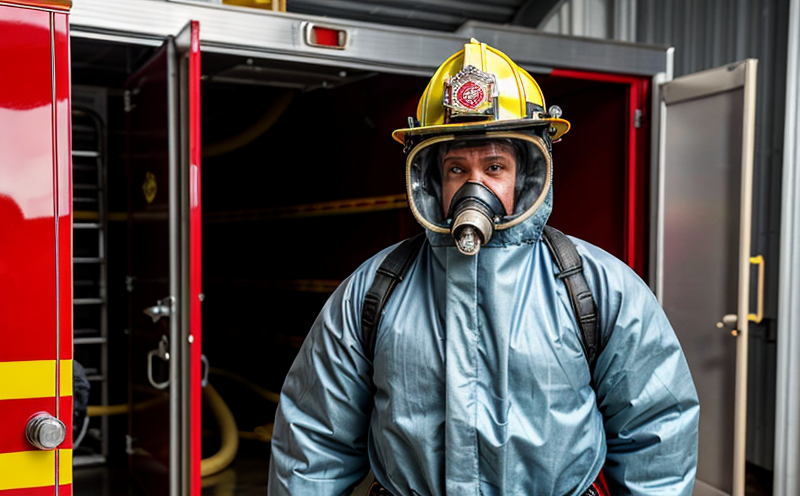NFPA 1971 Standard on Protective Ensembles for Structural Fire Fighting Testing
The NFPA 1971 standard is a comprehensive guide that sets the minimum performance requirements for protective ensembles used by firefighters. This ensemble includes garments, accessories, and personal protective equipment (PPE) designed to protect structural firefighters from the hazards they face during fire suppression operations. Compliance with this standard ensures that the equipment provides adequate protection against heat, flames, chemicals, and physical impacts.
The testing and certification process outlined in NFPA 1971 is rigorous and multi-faceted, ensuring that protective ensembles meet stringent performance criteria. The ensemble must undergo a series of tests to verify its ability to withstand high temperatures, resist flame penetration, provide thermal insulation, and maintain structural integrity under stress. Additionally, the ensemble should protect against chemical exposure and be capable of withstanding physical impacts such as falls or being struck by objects.
The testing protocol for NFPA 1971 involves several critical components:
- Thermal Insulation Testing
- Flame Penetration Resistance Testing
- Heat Transfer Rate Measurement
- Physical Impact Resistance Testing
- Chemical Resistance Testing
- Breathability and Comfort Assessment
The ensemble must also pass a series of functional tests to ensure that it meets the demands placed on it during real-world firefighting operations. This includes:
- Fit and Usability Testing
- Airborne Particulate Filtration Efficiency
- Breathable Layer Integrity
- Seam Strength Evaluation
- Puncture Resistance Assessment
Understanding the detailed process of NFPA 1971 compliance is crucial for quality managers, compliance officers, R&D engineers, and procurement professionals who are responsible for selecting and certifying protective ensembles. This testing ensures that the equipment not only meets but exceeds the expectations set by fire safety standards.
| Applied Standards | Description |
|---|---|
| NFPA 1971:2018 | The standard for protective ensembles used by structural firefighters. |
| ISO 6451-3:2010 | Test methods for personal protective equipment (PPE) against heat and flame. |
| ASTM F1959-18 | Standard test method for determining the thermal performance of protective ensembles for structural firefighters. |
The multi-faceted approach to testing ensures that the ensemble not only meets but exceeds expectations in terms of protection and functionality. This standard is critical for ensuring firefighter safety, which is paramount in any fire department operation.
Scope and Methodology
The scope of NFPA 1971 testing encompasses several key areas:
- Thermal Performance Testing
- Flame Penetration Resistance Testing
- Heat Transfer Rate Measurement
- Physical Impact Resistance Testing
- Chemical Resistance Testing
- Breathability and Comfort Assessment
The methodology for each test is meticulously detailed in the standard, ensuring that all testing is conducted under controlled conditions. The thermal performance tests involve placing the ensemble in a radiant heat source to measure its ability to withstand high temperatures without allowing flames to pass through. Flame penetration resistance tests are performed by subjecting the ensemble to direct flame contact to ensure it can prevent fire from passing into the interior.
Heat transfer rate measurement involves assessing how quickly heat is transferred through the ensemble, which is crucial for ensuring that firefighters remain comfortable and do not overheat. Physical impact resistance testing is conducted using a series of drop tests to evaluate the ability of the ensemble to withstand impacts without compromising its integrity. Chemical resistance tests are performed by exposing the ensemble to various chemicals to ensure it can protect against chemical exposure.
Breathability and comfort assessment involves evaluating how well the ensemble allows for air circulation, which is essential for maintaining firefighter safety during prolonged operations. The testing process also includes functional assessments such as fit and usability testing, airborne particulate filtration efficiency, breathable layer integrity, seam strength evaluation, and puncture resistance assessment.
By adhering to these rigorous standards, manufacturers can ensure that their protective ensembles meet the highest levels of performance and reliability required by firefighters. This comprehensive approach ensures that firefighters have the best possible protection while performing their critical duties.
Why Choose This Test
Selecting a testing laboratory that specializes in NFPA 1971 compliance is essential for manufacturers and suppliers of protective ensembles. Our laboratory provides a range of services, including:
- Thermal Performance Testing
- Flame Penetration Resistance Testing
- Heat Transfer Rate Measurement
- Physical Impact Resistance Testing
- Chemical Resistance Testing
- Breathability and Comfort Assessment
- Functional Assessments
The benefits of choosing this test include:
- Comprehensive Compliance Assurance
- Expertise in Fire Safety Standards
- State-of-the-Art Testing Facilities
- Rigorous Quality Control Processes
- Accurate and Reliable Test Results
- Detailed Reporting and Certifications
The comprehensive compliance assurance provided by our laboratory ensures that all protective ensembles meet the stringent requirements set forth in NFPA 1971. With expertise in fire safety standards, we employ state-of-the-art testing facilities to ensure accurate and reliable results. Our rigorous quality control processes guarantee consistent and high-quality performance of each ensemble tested.
Detailed reporting and certifications from our laboratory provide manufacturers with the necessary documentation to meet regulatory requirements and gain market access. By choosing this test, you can be confident that your protective ensembles are the best possible choice for firefighters, providing them with the highest levels of protection and reliability in their critical duties.





